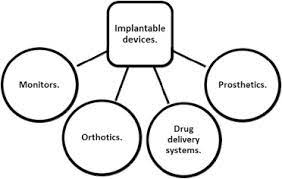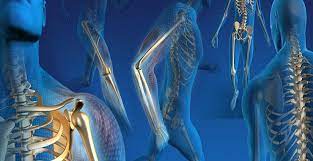The Nanoengineered Prosthetics Market to Witness Robust Growth in North America
Nanoengineered prosthetics are implantable devices intended
to replace missing body organ, using nanostructures and nanotools for their composition.
Nanoengineered prosthetics comes under subdivision of nanomedicine. The use of nanostructures
and nanotools have improved the functions of nanoengineered prosthetics.
Moreover, the use of nanostructures and nanotools have reduced various
disadvantages, such as infection around the site and dislocation of the
implant, of using conventional prosthetics. The nanoengineered prosthetics
market is gaining huge traction due to increasing research and development
activities.
For instance, in May 2020, researchers form the Department
of Biomedical Engineering at Texas A&M University developed nanoengineered
bioink to 3D print functional bone tissues. The study demonstrates that bioink
developed in the lab can be used to engineer 3D bone tissues. Moreover, researchers
form University of Maryland (UMD) and the Rice University outlined a new proof-of-concept
for 3D printed artificial bone tissue to help repair damage related to
arthritis and sporting accidents. Such recent advancements are expected to
augment the nanoengineered
prosthetics market growth.
Furthermore, in June 2020, researchers form the Texas
A&M University used 3D printed biomaterials to create facial bone grafts. The
team combined stem cell biology, biomaterial engineering, and 3D printing to
create new, more efficient, customizable bone grafting materials. Bone grafting
is a medical procedure that replaces missing bone to repair extremely complex
bone fractures. Any fracture of the bone is structurally important because it
gives the supporting tissue, including muscle and ligament, a firm and secure
basis from which to pull together. Some minor or very minor bone injuries can
also be treated without bone grafting, however, the risk is higher for large
bone fractures such as compound fractures.
The nanoengineered prosthetics market is witnessing
significant growth due to the increasing incidence of limb loss in the global
population, especially in North America. According to the Ohio State University,
around 2.1 million people in the United States are living with limb loss, and
that number is expected to double by 2050. Around 185,000 Americans have an
amputation each year, and around 1,558 military personnel lost a limb as a
result of the war. The above-mentioned factors are expected to increase the
demand for prosthetics, which, in turn, fuel the nanoengineered prosthetics
market growth.
However, there are some disadvantages, the treatment is expensive
and may lead to side-effects or even complete rejection of the implant. These
factors are expected to hamper the growth of the nanoengineered prosthetics
market.




Comments
Post a Comment